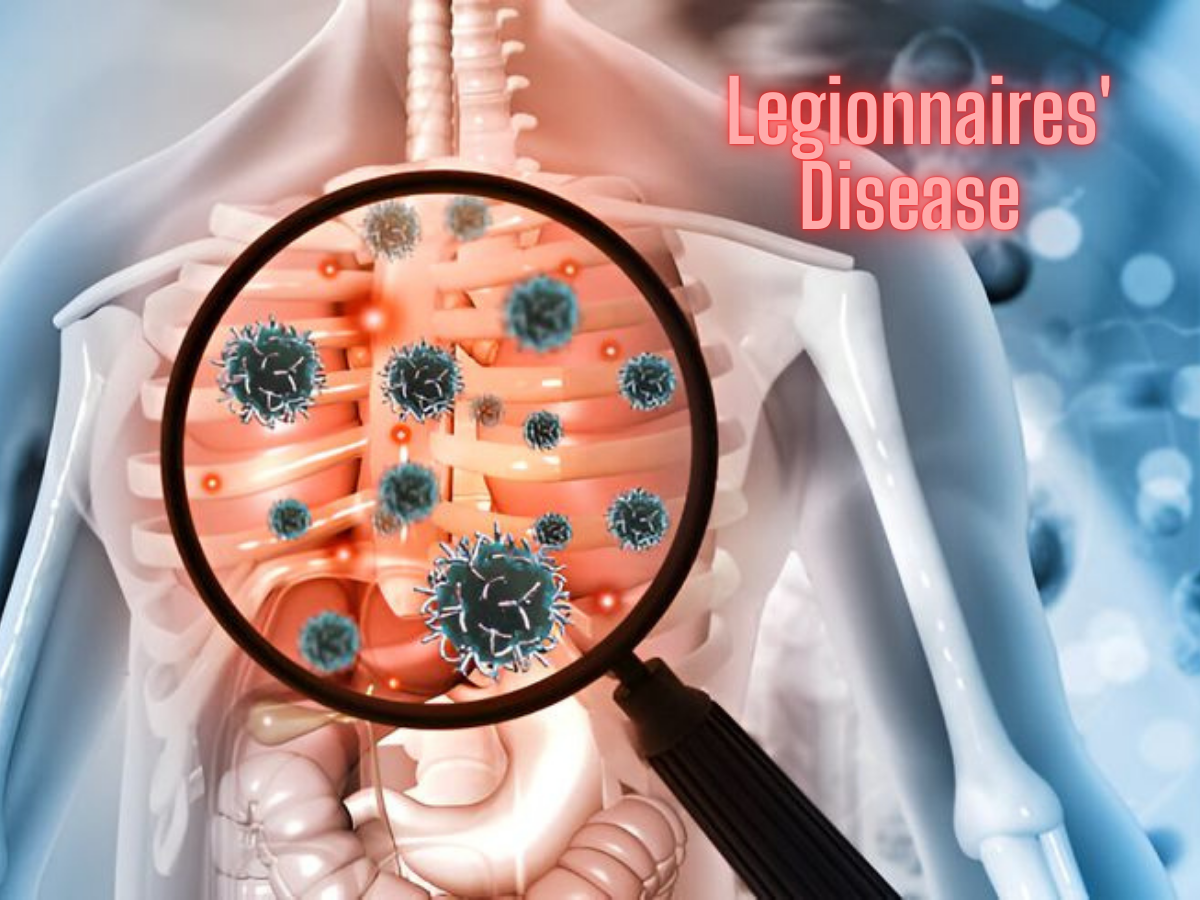Legionnaires’ Disease Symptoms: How It Spreads, Treatment, and Prevention

Legionnaires’ Disease Symptoms usually start like a mild flu, but can become serious if not treated. The infection is caused by Legionella bacteria, which can grow in water sources such as hot tubs, showers, and cooling systems. Outbreaks have occurred in Legionnaires’ Disease, Las Vegas, and Legionnaires’ Disease, Lincoln, NH. In this blog, you will […]
Table of Contents
Legionnaires’ Disease Symptoms usually start like a mild flu, but can become serious if not treated. The infection is caused by Legionella bacteria, which can grow in water sources such as hot tubs, showers, and cooling systems. Outbreaks have occurred in Legionnaires’ Disease, Las Vegas, and Legionnaires’ Disease, Lincoln, NH. In this blog, you will learn how Legionnaires Disease spreads, the common symptoms, available Legionnaires Disease treatments, and simple ways to prevent infection.
What is Legionnaires’ Disease?
Many people ask, What is Legionnaires’ Disease. It is a severe type of pneumonia caused by Legionella bacteria. Early symptoms often feel like the flu, making it easy to miss. Common Legionnaires’ Disease symptoms include fever, cough, fatigue, chest discomfort, and shortness of breath. Some patients may even develop a Legionnaires’ Disease rash. Recognizing signs and symptoms of Legionnaires’ Disease early allows doctors to provide timely care and prevent serious complications.
How Legionnaires’ Disease Spreads
A common question is, How is Legionnaires’ Disease spread? Legionella bacteria grow best in warm, stagnant water and can thrive in plumbing systems, cooling towers, fountains, and hot tubs. Infection occurs when someone breathes in small droplets of water containing the bacteria. Human-to-human transmission is very rare. Outbreaks such as Legionnaires’ Disease, NH, and Legionnaires’ Disease Las Vegas show the dangers of water. To prevent the disease, it is necessary to maintain the cleanliness of water systems in buildings, hotels, and public places.
Recognizing Legionnaires’ Disease Symptoms
Knowing what symptoms to look for is key to catching it early. Patients may experience:
- Persistent cough associated with high fever and chills
- Chest pain or difficulty breathing
- Muscle aches and fatigue
- Digestive issues such as nausea, vomiting, or diarrhea
At times, Legionnaires’ Disease rash can appear. Early recognition of Legionnaires’ Disease Symptoms allows doctors to start treatment quickly, reducing the risk of severe complications like pneumonia or organ failure. Families should watch for unusual symptoms, especially in older adults or people with weakened immunity.
Diagnosis and Treatment
Doctors confirm Legionnaires’ Disease through chest X-rays, urine antigen tests, and lab cultures. Legionnaires’ Disease treatments are primarily antibiotics, commonly referred to as Legionnaires’ Disease antibiotics, such as macrolides or fluoroquinolones. At higher severity, more medication for Legionnaires’ Disease may be given. Worse instances might even need to be consulted by experts in Legionnaires’ Disease. Prompt Legionnaires treatment leads to improved and faster recovery, along with reduced complications.
Supportive care, including oxygen therapy and intravenous fluids, may be needed for critically ill patients. Following proper Legionnaires disease treatment plans, combined with preventive steps like how to prevent Legionnaires Disease in the home, greatly reduces the risk of infection.
Vaccine and Prevention
There is currently no licensed vaccine, but Legionnaires’ Disease vaccine clinical trials in 2025 are reaching a stage of development. Prevention is the best protection. It is, however, important to regularly clean water systems, maintain hot tubs Legionnaires Disease, and respect hygiene practices. Understanding Legionnaires’ Disease Symptoms helps people seek early medical attention, which can reduce severity and improve outcomes. Public awareness about how to prevent Legionnaires Disease in the home is critical for community health. To explore more self-care or fitness resources, visit HealthHubAu.
Outbreaks and Community Impact
Outbreaks, such as those in Legionnaires Disease Las Vegas and Legionnaires Disease Lincoln, NH, show how a single contaminated water source can affect many people. Hotels, hospitals, and public buildings are especially at risk. Quick public health responses, regular inspections, and community education help reduce the spread. Preventive actions protect vulnerable groups, including older adults and people with chronic illnesses, from severe infection.
How Dangerous is Legionnaires’ Disease?
Legionnaires’ Disease Symptoms can become severe quickly. Without proper treatment, it may lead to respiratory failure, septic shock, or death. Recognizing Legionnaires’ Disease Symptoms early, together with administering Legionnaires Disease treatment quickly, could be lifesaving. The reduction of complications and the salvaging of health can only be accomplished through awareness of symptoms and risk factors.
Conclusion
In summary, Legionnaires’ Disease Symptoms should never be ignored. Recognizing Legionnaires’ disease symptoms, seeking timely Legionnaires’ Disease treatments, and following how to prevent Legionnaires Disease in the home are key to staying safe. Being aware of water sources, such as hot tubs, and knowing the signs and symptoms of Legionnaires Disease can help prevent serious complications. Early action and proper care protect both you and your community. To learn more health-related tips, click here.

